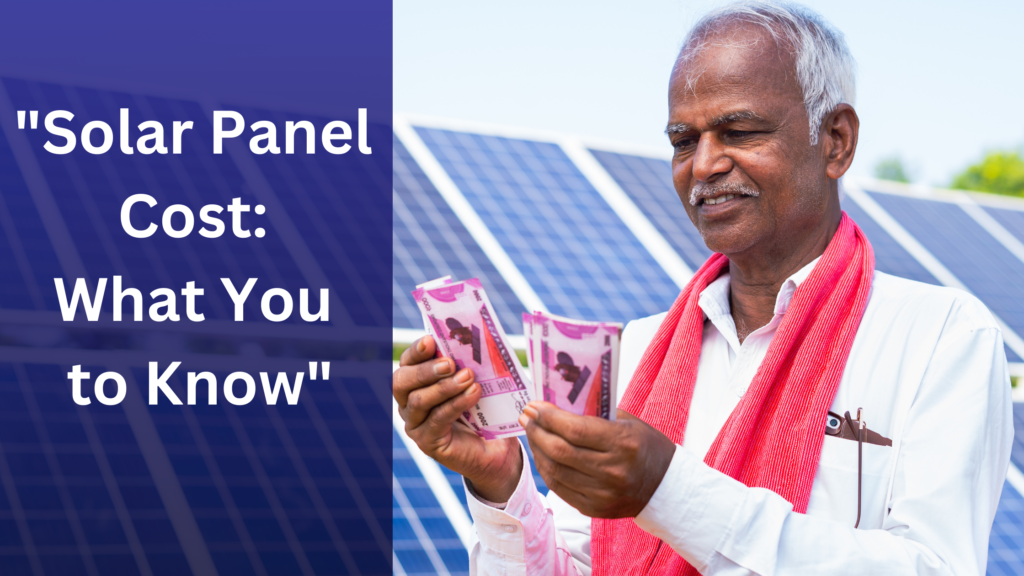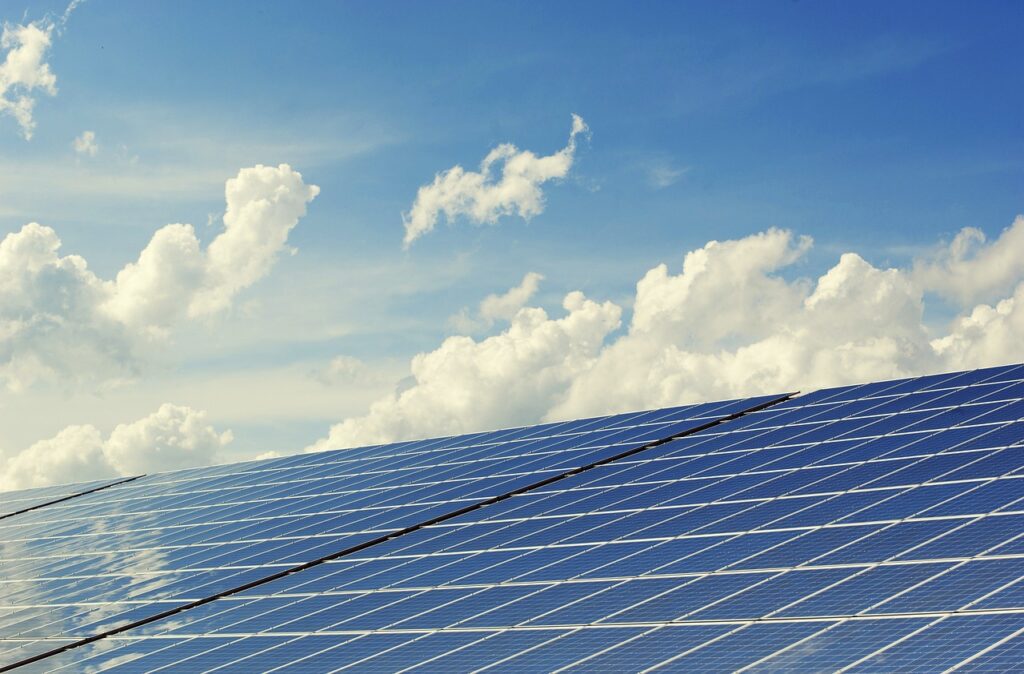"Solar Panel Cost: What You Need to Know"
Solar Panel Cost: What You Need to Know
As the world increasingly turns to renewable energy sources, solar power stands out as a prominent and viable solution. With the growing interest in sustainability, understanding the cost implications of solar panel installations is crucial for homeowners and businesses alike. This blog aims to provide a comprehensive overview of solar panel cost, breaking down the factors that influence it and the potential savings it can bring.
Introduction
The adoption of solar power is accelerating worldwide, driven by environmental concerns and the desire for energy independence. Solar panels, which convert sunlight into electricity, are at the forefront of this green revolution. However, one of the most common questions potential solar adopters ask is: “How much do solar panels cost?” This blog will delve into the various components that contribute to the overall cost of solar panels, helping you make an informed decision about investing in this renewable energy source.
Understanding Solar Panel Cost
Factors Influencing Solar Panel Cost
1. Type of Solar Panels: The type of solar panels you choose significantly affects the overall cost. There are three main types of solar panels: monocrystalline, polycrystalline, and thin-film. Monocrystalline panels are typically more efficient and expensive, while polycrystalline panels offer a balance between cost and efficiency. Thin-film panels are generally the least expensive but also the least efficient.
2. System Size: The size of the solar power system you need depends on your energy consumption and the available roof space. Larger systems produce more electricity and cost more upfront but can lead to greater savings in the long run.
3. Installation Costs: Installation costs can vary based on the complexity of the job, the height and type of roof, and local labor rates. Professional installation ensures the system is set up correctly and safely.
4. Location: The cost of solar panels can vary by location due to differences in local incentives, electricity rates, and weather conditions. States or regions with higher electricity prices and better solar incentives tend to have lower net costs for solar installations.
5. Incentives and Rebates: Government incentives, rebates, and tax credits can significantly reduce the upfront cost of solar panels. The Federal Investment Tax Credit (ITC) in the United States, for example, allows you to deduct a portion of your solar installation costs from your federal taxes.
Breakdown of Solar Panel Cost Components
– Solar Panels: This is the most obvious cost, which includes the actual panels that will be installed. The price per watt for solar panels can range from $2.50 to $3.50.
– Inverters: Inverters convert the DC electricity generated by the panels into AC electricity that can be used in your home. The cost of inverters can range from $1,000 to $3,000, depending on the type and capacity.
– Mounting Equipment: This includes the racks and hardware needed to attach the solar panels to your roof or ground-mounted system. The cost can vary but generally ranges from $10 to $15 per panel.
– Installation: Labor costs for installation can range from $0.50 to $1 per watt. Complex installations on steep or difficult-to-access roofs can be more expensive.
– Permitting and Inspection Fees: Local governments require permits and inspections for solar panel installations. These fees can add a few hundred dollars to the total cost.
– Maintenance and Monitoring: While solar panels require minimal maintenance, monitoring systems that track the performance of your system can add to the cost. These systems can range from $300 to $500.
Potential Savings and Return on Investment
Energy Savings
One of the primary benefits of solar power is the reduction in electricity bills. By generating your own electricity, you can significantly cut down on your monthly energy expenses. The amount you save depends on the size of your system, your energy consumption, and local electricity rates. In many cases, solar panels can reduce your electricity bill by 50% or more.
Tax Incentives and Rebates
As mentioned earlier, various incentives and rebates are available to offset the initial cost of solar panel installations. The Federal Investment Tax Credit (ITC) allows homeowners to deduct 26% of the cost of their solar installation from their federal taxes in 2022. Additionally, many states offer their own incentives, which can further reduce the overall cost.
Increased Property Value
Homes equipped with solar power systems often see an increase in property value. Studies have shown that homes with solar panels sell faster and at higher prices than those without. This increase in property value can help offset the initial investment in solar panels.
Long-Term Investment
Solar panels have a lifespan of 25-30 years, making them a long-term investment. The initial cost may seem high, but the savings on energy bills and potential earnings from excess energy (through net metering) can provide a significant return on investment over the system’s lifetime.
Financing Options for Solar Panels
Cash Purchase
Paying for solar panels upfront with cash is the simplest financing option. While this requires a significant initial investment, it offers the highest long-term savings since you won’t have to pay interest on a loan.
Solar Loans
Solar loans allow you to finance your solar panel system and pay it off over time. These loans can be secured (using your property as collateral) or unsecured. While you will pay interest, the monthly loan payments are often lower than your previous electricity bills, leading to immediate savings.
Solar Leases and Power Purchase Agreements (PPAs)
With a solar lease or PPA, a third-party company owns and maintains the solar panels on your roof, and you pay a fixed monthly amount for the electricity they produce. This option requires little to no upfront cost, but the long-term savings are typically less than if you own the system outright.
Conclusion
Understanding solar panel cost is crucial for anyone considering switching to solar power. The total cost of a solar power system depends on various factors, including the type of panels, system size, installation costs, and location. Despite the initial investment, solar panels offer significant long-term savings through reduced energy bills, tax incentives, and increased property value. By carefully evaluating the costs and benefits, you can make an informed decision about whether solar power is the right choice for you.
Switching to solar power not only contributes to a sustainable future but also provides financial benefits that can make the initial investment worthwhile. Whether you choose to purchase your system outright, finance it through a loan, or opt for a lease or PPA, the move to solar energy is a smart and forward-thinking decision.
Investing in solar power is more accessible than ever, thanks to decreasing costs and increasing incentives. By understanding the components that make up the total solar panel cost, you can better navigate the options available and find a solution that fits your needs and budget. The shift to solar energy is not just an environmental choice but also a financially sound decision that can lead to substantial savings and a more sustainable future.


